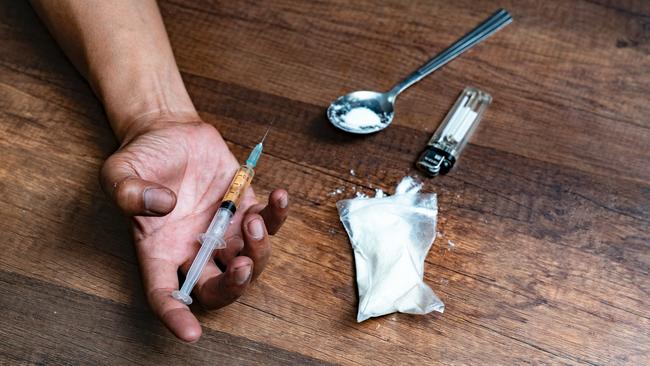Greys: New deadly drug trend in Cairns revealed
As new data shows an increase in drug overdose deaths in Cairns, an exclusive investigation has uncovered a drug taking over the illicit opiate market.

Cairns
Don't miss out on the headlines from Cairns. Followed categories will be added to My News.
A cocktail of pharmaceutical-based opiates drug dealers and users call “greys”, appears to have become the most popular sedative sold on Cairns City streets as new research shows an increase in opiate-caused drug overdose deaths in the region.
New research released from the Pennington Institute showed 67 people in Cairns died from unintentional drug overdoses in 2017-2021, an increase on previous years.
Pennington Institute’s Australia’s Annual Overdose Report 2023 showed that unintentional overdose deaths in Australia have now exceeded the road death toll every year since 2014 and are one of the top three causes of death for people aged between 20 and 50.
Opiates are the most fatal drug, according to the report.
Nationwide, 45% of unintended overdose deaths came from opioid use – with more than half of those deaths coming from pharmaceutical opioids rather than heroin.

The Cairns Post understands the most common opioid sold on Cairns streets is reportedly made up of pharmaceutical opioids and is known to dealers and users as “greys”.
Dealers and users have told the Cairns Post that “greys” is either usually a mixture of crushed-up morphine, oxycodone, and other painkillers, or sometimes just crushed-up morphine on its own.
One user explained that he bought his “greys” from a man with a back injury who sources various painkillers from the doctor and on-sells them.
Another said that coming off them feels “like agony” once you become addicted unless you take more of the drug.
Users inject the drug intravenously.
Users said the substance was always sourced originally through medical prescriptions, which were on-sold to the illicit market.
A dealer said that he sold 120mg of the substance for $100.
However, another dealer offered the same amount for $30.
Rebecca Lang CEO of the Qld Network of Alcohol and Other Drug Agencies (QNADA) said “greys” fitted with the longstanding pattern of opiate use in Queensland, which has tended toward illicit use of prescription painkillers rather than heroin.
“High morphine use is something we are starting to see in North Queensland consistently,” Ms Lang said.
“Traditionally, there is very little heroin in Queensland,” she said, “but any opioid can kill you.”
She said the opioids most likely making up “greys” were probably being “diverted” from the medical system.

“I think what we tend to see in Queensland with prescription opiates (being illicitly sold) is that it is coming from single doctors prescribing long-term, high doses to single patients”.
“We now have a system in Queensland in q-script which allows doctors to track to see if opiates have already been prescribed to that person.”
She said around 1% of Queensland’s population use opiates illicitly in any given year, slightly less than those who use methamphetamine.
The Pennington Institute’s report found that 160 residents in regional Queensland died of unintentional overdose (with a rate of 6.0 deaths per 100,000 population), compared to 132 residents in Greater Brisbane (with a rate of 5.2 deaths per 100,000 population) in 2021.
Penington Institute CEO John Ryan said Australia was facing a “real crisis” with drug overdoses with higher per capita deaths in “regional and rural Australia.”
“Most of those deaths in the Pennington report are not straight opioid deaths, they occur when people are using opioids mixed with alcohol and benzols or all three at once,” Ms Lang explained.
“People need to think about what sedative plus sedative means and that’s not just the people trying to get high on those drugs, it’s those who have been prescribed those drugs as well.”
More Coverage
Originally published as Greys: New deadly drug trend in Cairns revealed




